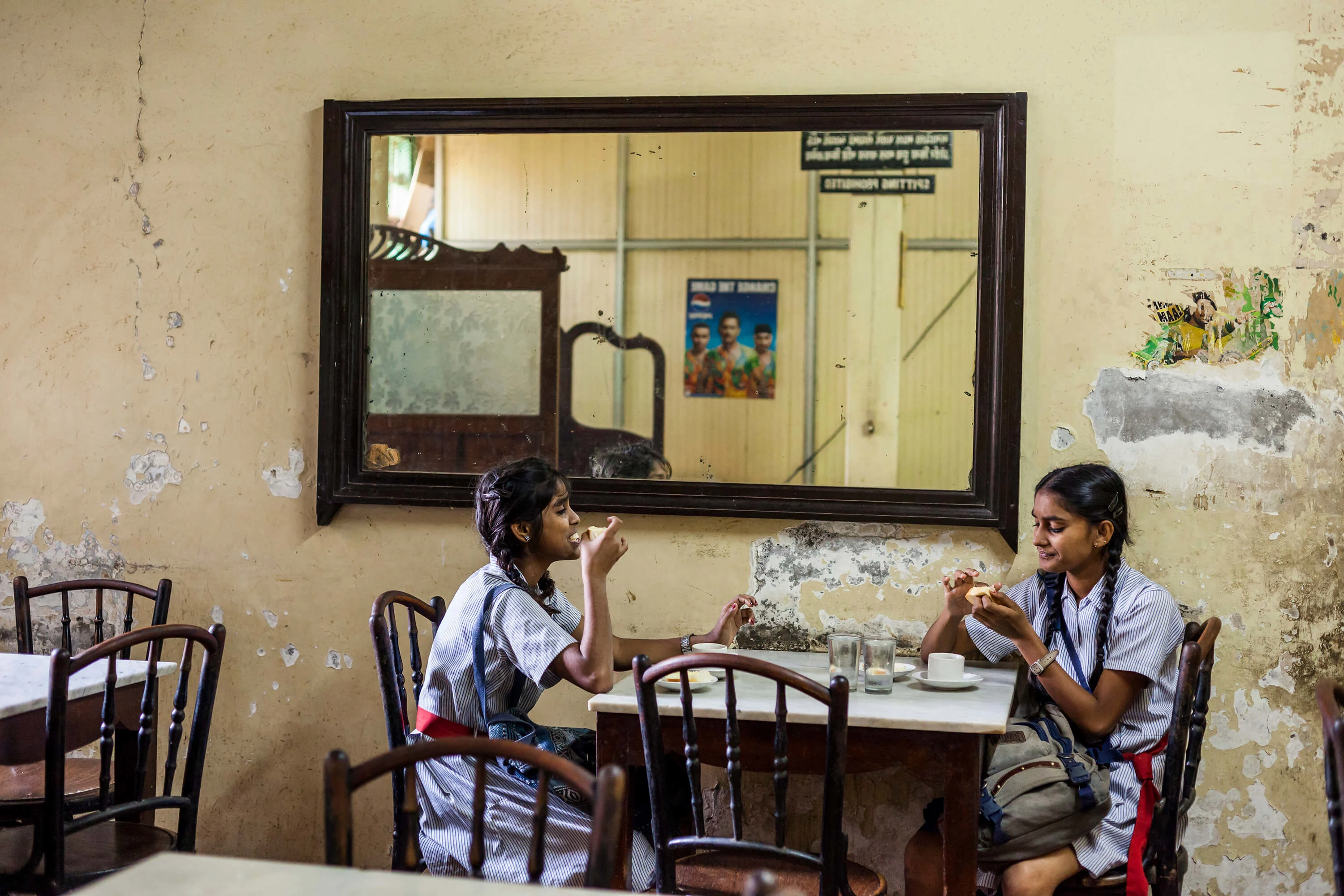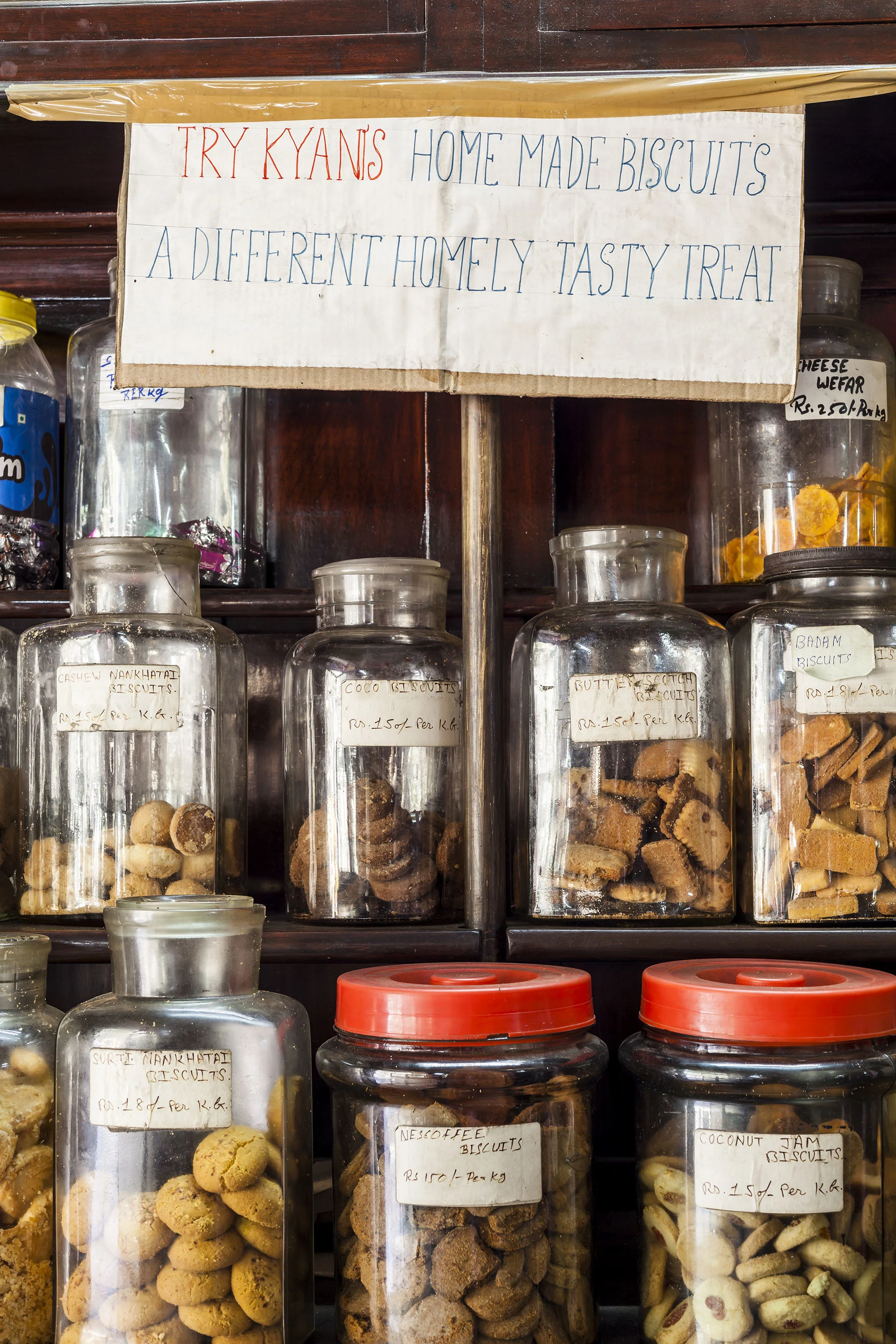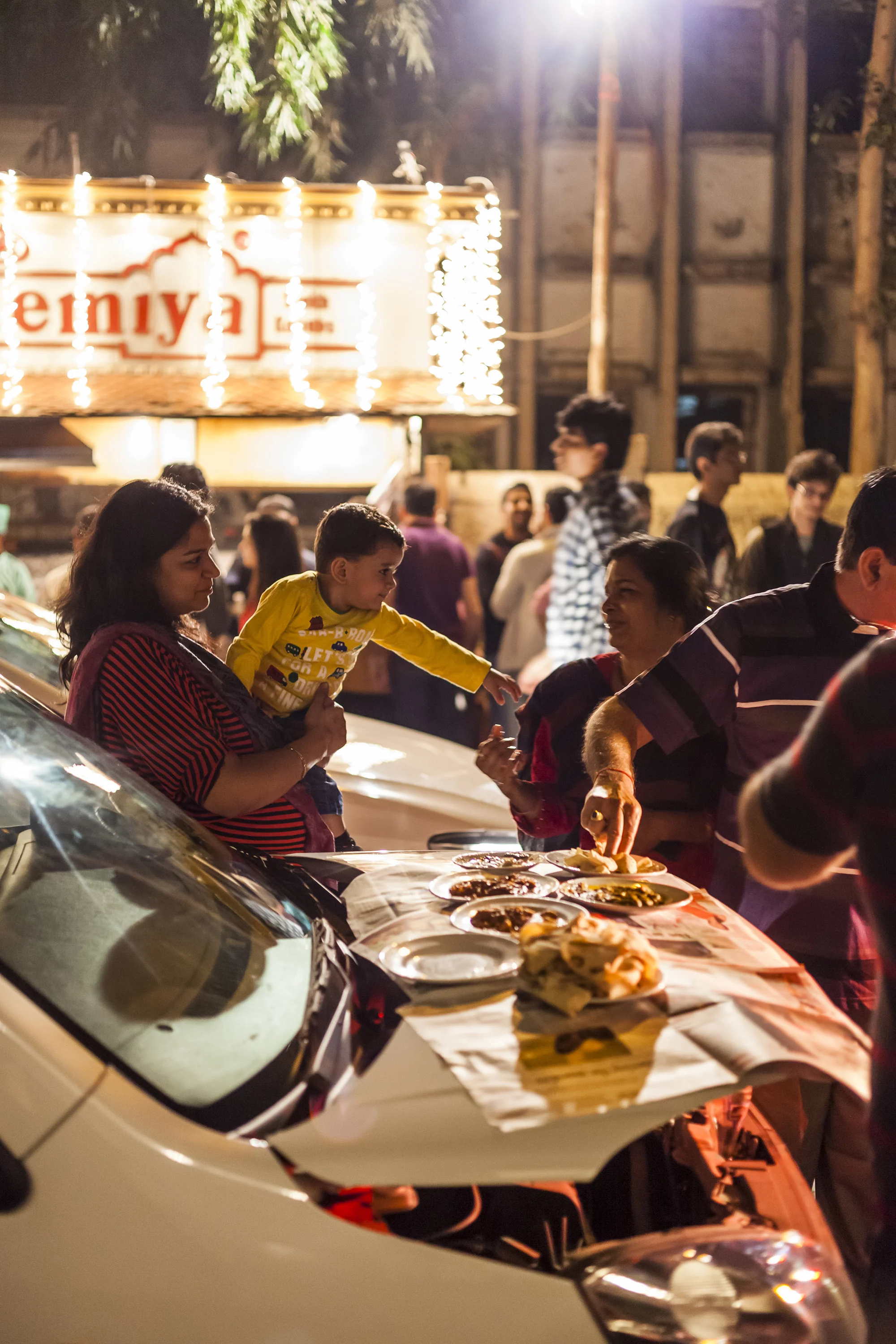

Since opening their first restaurant in London’s Covent Garden almost 10 years ago Dishoom has redefined the once stereotypical and narrow view that British culture bestowed upon Indian food. Inspired by the Irani cafés of Bombay that sprung up from the late 19th Century, Dishoom now boasts seven restaurants, an album and even a play. Now adding a cookbook to that list, writer Maisie Skidmore explores what goes into designing the world of Dishoom.
Some 10 years ago Shamil Thakrar (who is quite a prolific reader) was thinking a lot about Dieter Rams’ Ten Principles of Good Design – a text referred to as “the commandments” by aficionados and experts throughout the industry. “I remember I wrote, a bit pompously, a blogpost on it,” he says, with not a hint of pomp. “I said, ‘but there’s an eleventh rule of design: design can be story.’”

Around that time Shamil was knee-deep in design himself. He, his cousin Kavi and chef Naved Nasir had recently opened the very first outpost of Dishoom in Covent Garden, London – a restaurant inspired by the great and democratic Irani cafés of Bombay (a colonial name which has stuck, despite the official change to Mumbai in 1995) and all of the history, gossip and cosmopolitanism wound up in them. “A lovely story,” he says, leaning forward. “Immigrants from Iran, or Persia as it was then, coming to Bombay to escape religious persecution, set up these cafés. And then the cafés became places that everyone could come to – taxi-wallas, prostitutes and common people could all eat out, for the first time.”
From the late-19th Century onwards, the Irani cafés sprung up like little democratic refuges on Bombay’s street corners – sites which were superstitiously avoided by enterprising Hindus – serving people of all faiths, castes, creeds and kinds and allowing the city’s diverse populations to mingle, breaking bread together. “Gradually, over the decades, they become beautiful institutions in the city,” Shamil continues. “And then they disappear.” From zero to 400 Irani cafés, to the 25 or so remaining today, all in the space of a single century. It’s a story of a warm welcome – tables groaning under the weight of food, charismatic and wilful proprietors cajoling their customers – and a wistful goodbye.



These lovely bits of heritage are beautiful. They need celebration, they need preservation.

In the 10 years since, Dishoom has proven the power of the story of the Irani cafés, and its co-founders’ multi-faceted means of telling it, time and time again. Each restaurant – there are seven, now, having recently opened in Manchester and Edinburgh, as well as five London locations – is steeped in its own distinct narrative, channelled recently into a cookery book (more on which later). They all serve the aromatic, oozy dishes that cry out to be shared, savoured, eaten with your hands and remembered longingly later. But the interiors, artwork, tableware and music of each are all conceived in connection to an imagined main character, with an individual raison d’être. This is “design as storytelling” at its most potent.
Take, for example, the King’s Cross restaurant – and the proprietor behind it. “In essence, we imagine a young Irani man who comes into a goods shed near Victoria Terminus, in 1928,” Shamil explains. “Victoria Terminus is a bit like Bombay’s St Pancras – this mad Gothic building filled with Italian marble and cherubs and flying buttresses. It was just so extravagant. We imagined that this guy sees these men and machines and commerce and horses and languages and says to himself; ‘I can sell them some chai.’ So he bribes the guards, and sells them some chai. Then later he comes again, and bribes them some more, and brings some pots and pans. A few weeks later sets up a little seating area. And then 20 years later, he’s taken over the whole place.”


The predominant event of that period, from the 1920s until the 1950s, was Indian independence, which ended the 90-year rule of the British Raj in India. The interior is painstakingly designed to reflect that. Every inch of the restaurant is decked out in posters, paintings, graffiti sourced from archives in India and the British Library – every color, typeface, expression and interior detail drawn from research. He shows me a design guide, shared with every new member of staff, which documents the name and back-story of every person in every photograph, illustration, advertisement on the restaurant’s walls – each one taken either from the era, or from the staff’s own family albums. Every door handle, floor tile, post and piece of signage is shown next to the Bombay original which inspired it. The guide is 50 pages long. An equivalent exists for every individual restaurant. The attention to detail is akin to that of a Wes Anderson film.
This dedication is central to Dishoom. The idea for the restaurant was initially born out of a frustration with the two-dimensionality with which modern British culture has viewed India – an enormous country with an even bigger history, so often reduced down to tikka masala, elephants, cricket. Born in Uganda, Shamil spent some time in India as a child – his first birthday was celebrated at Irani café Koolar & Co., he learned not long ago – before moving to the UK, and has returned often ever since. But the Bombay of his memories from the 1970s and ‘80s is almost unrecognisable now. “A commercial tsunami has swept over the city and modernised it,” he says. “But the city is so damned inefficient with its rent regulations and planning that this tsunami has left things sheltering, protected, in the niches. These lovely bits of heritage – like the Irani cafes, that just kind of exist there – don’t really make sense in a free market economy. But they’re beautiful. They need celebration, they need preservation.” Which is where Dishoom comes in. “We can’t physically preserve them, and I think they’ll disappear, but at least we can document them, share love for them.”

We chucked away our design guidelines.
The Dishoom universe, which is something like an immersive theatre experience for every restaurant-goer, extends far beyond the restaurants themselves. The Carnaby restaurant – which was created in the fictional image of a dapper Indian adolescent who spent the 1960s in London “tripping on Primrose Hill at sunrise, dancing with Jean Shrimpton and David Bailey” and returns to Bombay to run his father’s Irani café upon news of his death – inspired a record. “Bombay had a great rock scene in the 1950s and ‘60s,” Shamil says. “Kids who had listened to The Beatles and The Stones picked up a guitar and started playing. The restaurant is a documentation of this scene, and of all the people who were around.” Real people, he clarifies – among them Asha Puthli, a friend of Dishoom, who “was Donna Summer, before Donna Summer existed. We found all these people, brought them back to London and made the record.” He puts it on – it hums softly under the rest of our interview. It’s intoxicating.
There was also a play – written and performed every night of the opening weeks of the Kensington restaurant, based on the underworld existence of Cyrus Irani, a reformed criminal who opens a jazz club in an old art deco cinema. “Instead of coming to Dishoom, you came, for two weeks, to a play called Night at the Bombay Roxy. It would unfold in front of you – there were the corrupt policemen, shooting and violence and beautiful singing and a couple of soliloquies.”

I interrupt Shamil. How, then, given the sheer expanse of the Dishoom universe, did he and the team go about distilling it into a single book? It was “impossible,” he confesses. And yet, Dishoom: From Bombay with Love is a weighty, pleasing hulk of a thing, every detail suitably considered. Ostensibly a recipe book – it is subtitled “Cookery Book and Highly Subjective Guide to Bombay With Map” – it takes the form of a “food and culture” tour of Bombay, its pages bursting with extra-curricular fun. Structured around one (very filling) day in the city, it invites readers to experience a gastronomic tour – comprising breakfast, morning snacks, lunch, afternoon refreshments, three dinners, dessert and late night drinks. There are photographs, recommendations, historical and cultural insights into the local areas, food markets, and, of course the recipes themselves – which are supplemented with a long final section that attempts to guide the enthusiastic home-cook through some of the intricate techniques used in making the dishes.
From Bombay with Love was realized with the help of Dave Brown, founder of creative agency APE. He is a designer who has carved out a niche for himself making books that are more than what they seem. “People seem to come to me when they want something different,” he explains. “I’m not a designer who has a house style. I take the brief and I immerse myself and then I throw up what comes out of that immersion.”



He was a natural fit. “We had to be very disciplined,” Shamil says. The overall intention, he continues, was to reconnect the reader with the food culture that informs these dishes. To that end, and in the place of corporate guidelines, Shamil offered Dave the holy grail of references – a well-worn book called Parsi Lustre on Indian Soil, by H.D. Darukhanawala. “This book is a directory of all the Parsis in India, published in 1939,” he says, handing it to me. (Gingerly – it is their only copy). “We chucked away our design guidelines. Whenever we work with someone new, we hand them this.” Its influence can be felt in the advertisements which bookend the publication – some recreated entirely, others adapted for the purpose.
How to conclude such an ambidextrous publication – one which is part recipe book, part tour guide, part history book, part memoir? Dave directs me to the inside back cover where, tucked quietly in the final pages, is an illustrated advertisement for “Mother Simin’s Syrup” – a tonic which cures “sluggishness, torpidity and sleeplessness from overeating.” It’s a final touch that Dave is particularly fond of. “I wonder how many people take that in?” he says. “It kind of puts a little smile in your head as you leave.”
Dishoom: From Bombay with Love published by Bloomsbury is available now.

